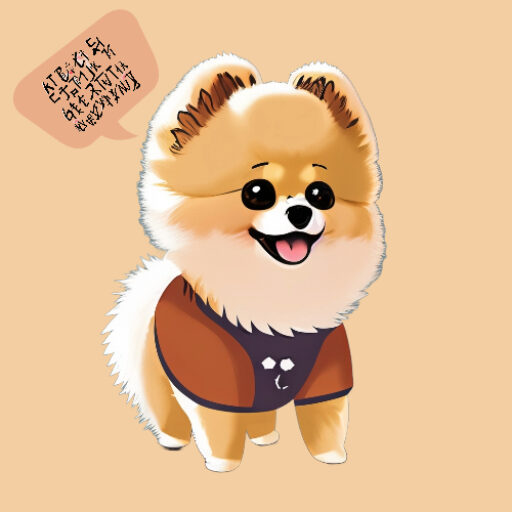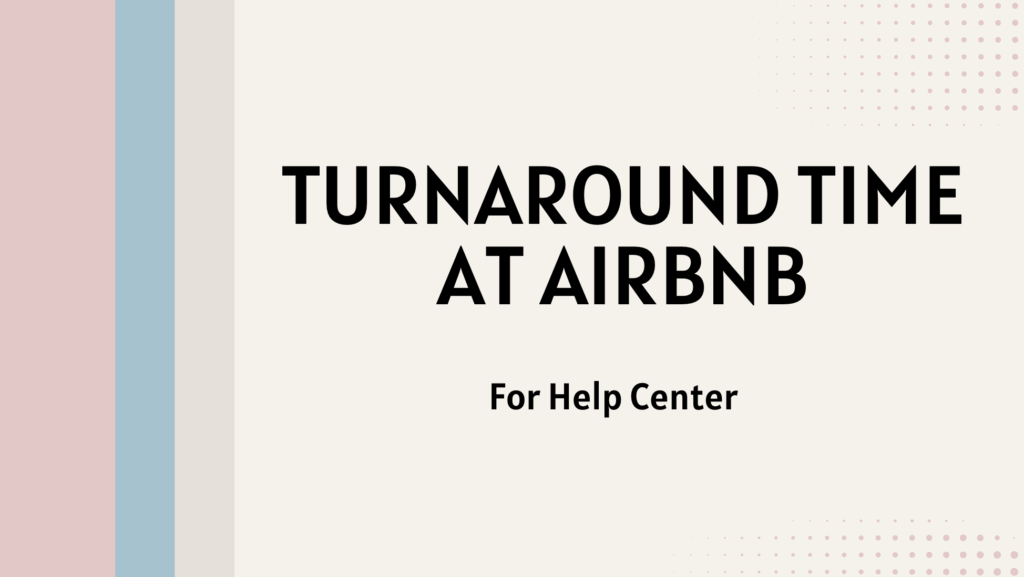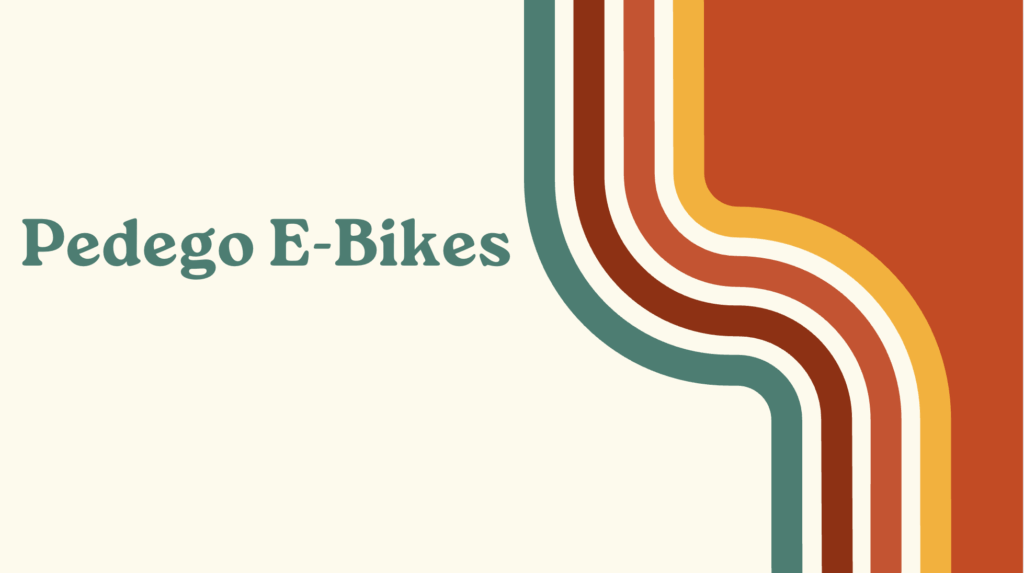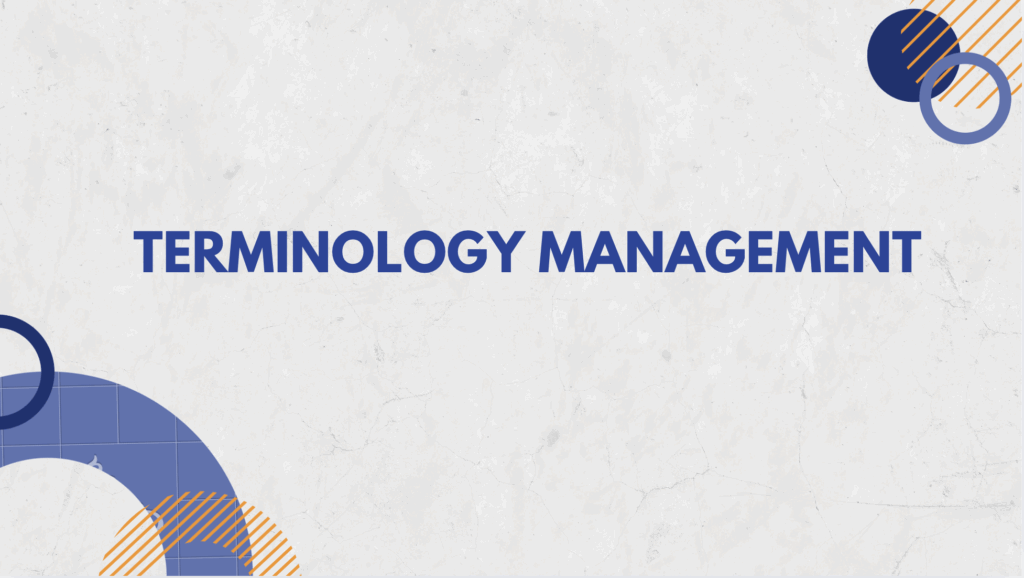What are CAT tools?
Computer-assisted translation (CAT) tools are software programs that assist human translators in transferring the meaning of text between languages more quickly and efficiently. More specifically, CAT tools provide translators with an interface for submitting, editing, managing, and storing multilingual content in one place.
Trados Studio is a CAT tool used worldwide in over 180 countries. I am going to share my experience with a Trados project.
Introduction
I worked on a CAT project with four teammates this year. Our team simulated a real translation process using Trados Studio. We assumed our client was the Chinese Government and translated the Report on the Work of the Chinese Government 2020 from Chinese to English. Since the government always demands high translation quality and a strict style guide, we wanted to do our best to improve our translation quality based on our language skills and focus more on details to complete a perfect project. I will discuss our project process and the lessons that I have learned in the following.
Our Project Process
The entire project was completed in two weeks and the source text has around 1,000 words.
- 1. After receiving the source document, Translation Memory and a style guide, we drafted a proposal. This included the project name, team members with their roles(Project Manager, Translator and Editor), our contact information, provided documents and deliverables, the project timeline and the quote(based on Trados analysis) to give client a clear first impression of what we are going to do and charge. Given that we wanted to maintain a long-term relationship with the client, and we got a TM received for better and more efficient translation, we decided not to charge the exact matches and offer a 10% discount on 99%-99% matches.
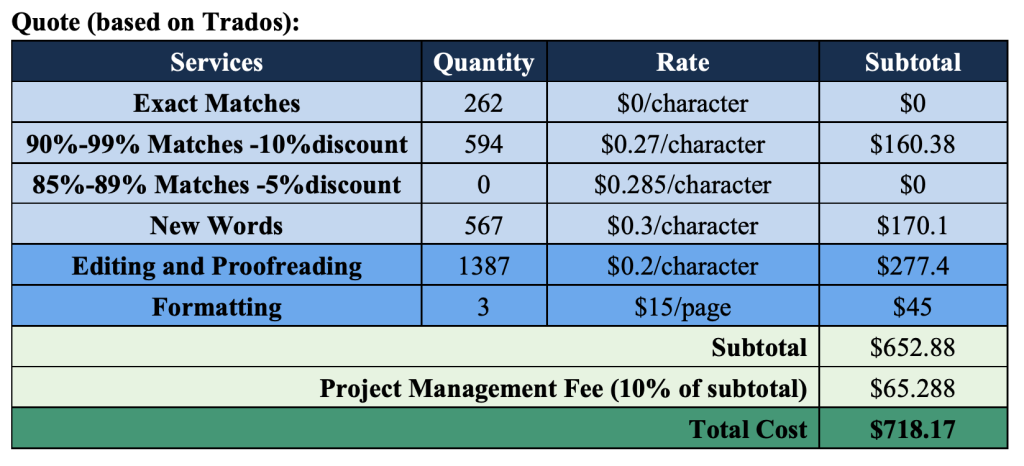
- 2. During the kick-off meeting, we confirmed some details such as document files, deadline and other requirements with the client. The client was satisfied that we would not only deliver the translated file, but also an updated TM and a new term base.
- 3. In the first three working days, we did technical preparation: creating Trados project, adding the received TM, setting up fuzzy matches. Over the following seven working days, we translated based on the existing TM, proofread and editing the formatting according to the given style guide. After translating the document, we updated the TM and created a new term base for future use.
- 4. Delivery.
The lessons that I have Learned from the Project
Trados and Technical skills
- Creating a term base for words with high frequency. I thought that it is necessary to create a term base only for proper nouns. But in a real-world, long document, some words or phrase, even sentences appear repeatly. To save time and improve translation quality, adding them into the term base is a good try. We used AntConc to identify them.
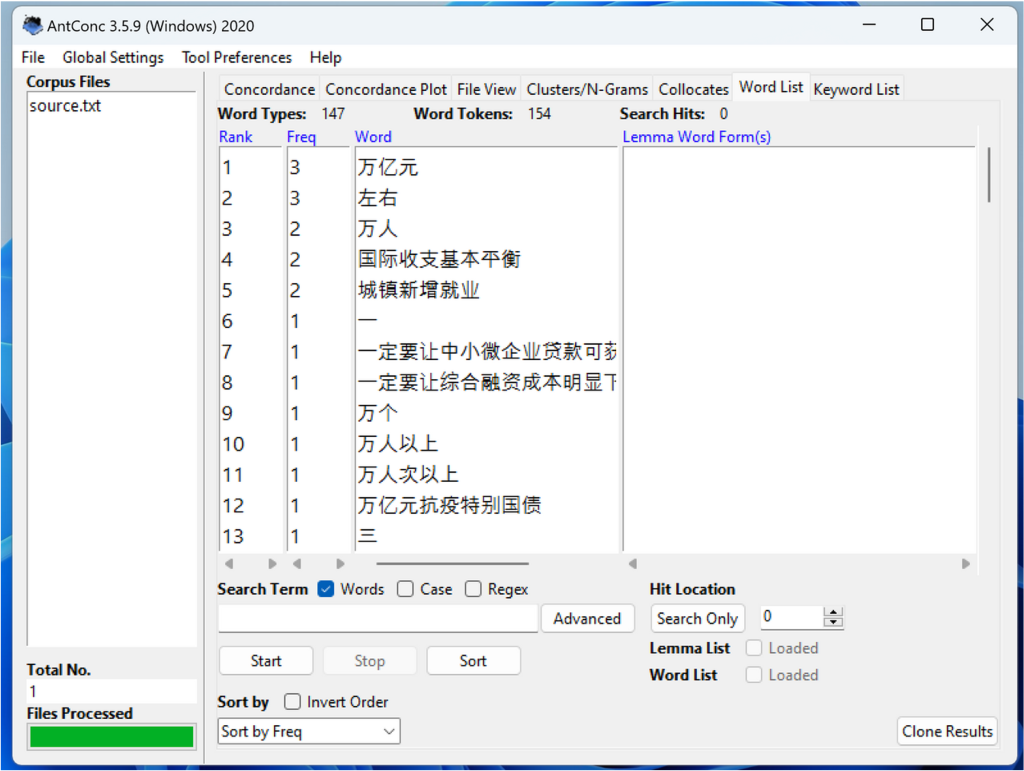
- Merging different TMs. We had multiple translators woking on different paragraphs separately. Thus, at the end of translation, we should merge all the TMs. We asked translators to save every file they worked on, including alignment documents, which are sdlalign files. We imported all the sdlalign files into the existing TM to finish the final TM.
How to interact with client
- A clear workflow is important for clients. We did not include a workflow in the proposal because we assumed that a table outlining deadlines would sufficiently inform the client about the entire translation process.But after receiving feedback from the client, I realize that they are not translation experts and not familiar with the process Therefore, it is essential to illustrate our method through concrete and descriptive charts or tables to demonstrate our team’s professionalism and simultaneously reassure our clients about the work entrusted to us. Consequently, we incorporated a detailed table into our final proposal to address this.”

- Let clients see a predictable pricing before projects begin. Clients require a relatively accurate quote, so it is important to analyze the source files with CAT tools, which not only helps clients determine if our project fits within their budget but also fosters trust between us.
- It is necessary to clarify in the proposal that the final price may differ from the initial quote. It is good if the final price is lower than what is on the quote. It is beneficial for both parties, the client gets the project done at a lower price, and we reduce the workload by setting up fuzzy matches to enhance the speed and quality of the translation. If the final price is higher, the prior statement in the proposal helps prevent client discomfort.
You can watch our presentation below.
Read more about Trados Studio:
